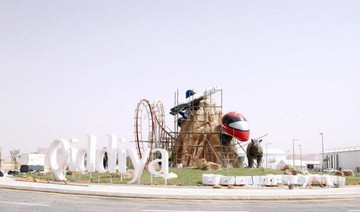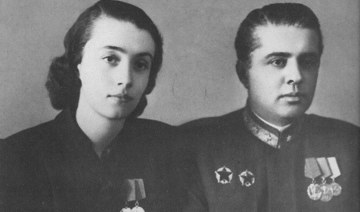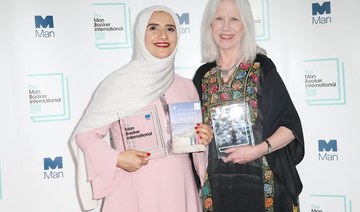RIYADH: Qiddiya Investment Company has unveiled a new performing arts center as an addition to Saudi Arabia’s rich cultural landscape.
The center, expected to attract more than 800,000 visits each year, will enhance the attractions within the newly announced Qiddiya City. An official statement said it would redefine the cultural experience for residents and visitors alike with its architecture, pioneering technology, and commitment to artistic innovation.
The center’s unveiling follows the announcement of other entertainment, sporting and cultural attractions, including a multi-use gaming and esports district, the multi-sports Prince Mohammed bin Salman Stadium, motorsport track, Dragon Ball theme park and Aquarabia, the first water theme park of its kind in the Kingdom.
Abdullah Al-Dawood, managing director of Qiddiya Investment Company, said: “Qiddiya City is more than just the home of entertainment and sports, it is also a leader in the preservation and promotion of Saudi culture. For this reason, we are thrilled to announce the addition of the Qiddiya Performing Arts Centre to Qiddiya City. It will be a beacon of creativity and innovation that will elevate Saudi Arabia’s cultural landscape to new heights. With its ground-breaking modern design, pioneering technology, and commitment to nurturing talent, the centre embodies the spirit of Qiddiya City as a place where imagination knows no bounds.”
Dr. Osama Ghanem Al-Obaidy, a professor from the Institute of Public Administration in Riyadh, told Arab News: “The new performing arts center is a significant cultural initiative that will contribute to the promotion of Saudi culture and heritage to both residents and foreign visitors alike. It will allow the year-round enjoyment of community, cultural and entertainment areas showcasing various aspects of Saudi culture, including music, dancing, and folk arts.
“It will provide a platform for individuals from diverse cultural backgrounds to show their talents through diverse cultural events,” he added.
He added the center was testament to the city’s commitment to fostering creativity and innovation as it would host over 260 indoor and outdoor performances and events every year.
With over 3,000 seats spread across three theatres, each will offer a 360-degree experience merging physical and digital elements. A cantilevered amphitheater offers breathtaking views of the City’s lower plateau with a fully adaptable 500-seat venue suspended from above.
The center will serve as an incubator for young Saudi talent, providing educational opportunities and resources to nurture the next generation of writers, producers and actors. It will stimulate economic growth by creating thousands of career opportunities across the creative and cultural sectors.
Beyond the performance spaces, the center will act as a vibrant community hub, inviting residents and visitors to explore dining, retail and educational entertainment options.
A rooftop sky garden, art galleries and green spaces will extend the cultural experience, while its iconic architecture will serve as a symbol of civic identity.
Qiddiya unveils new performing arts center
https://arab.news/bqpdw
Qiddiya unveils new performing arts center

- The center will host over 260 indoor and outdoor performances each year
- It will serve as an incubator for young Saudis, providing educational opportunities and resources to nurture the next generation of writers, producers, and actors
Ismail Kadare: A bright light in Albania’s darkest days

- Ismail Kadare: ‘Literature has often produced magnificent works in dark ages as if it was seeking to remedy the misfortune inflicted on people’
- Kadare was often tipped to win a Nobel prize for his towering body of work which delved into his country’s myths and history
TIRANA: Novelist Ismail Kadare — who has died aged 88 — used his pen as a stealth weapon to survive Albania’s paranoid communist dictator Enver Hoxha.
His sophisticated storytelling — often likened to that of George Orwell or Franz Kafka — used metaphor and irony to reveal the nature of tyranny under Hoxha, who ruled Albania from 1946 until his death in 1985.
“Dark times bring unpleasant but beautiful surprises,” Kadare told AFP.
“Literature has often produced magnificent works in dark ages as if it was seeking to remedy the misfortune inflicted on people,” he said.
He was often tipped to win a Nobel prize for his towering body of work which delved into his country’s myths and history to dissect the mechanisms of totalitarianism.
Kadare’s novels, essays and poems have been translated into more than 40 languages, making him the Balkans’ best-known modern novelist.
The prolific writer broke ranks with isolated Albania’s communists and fled to Paris a few months before the government collapsed in the early 1990s.
He wrote about his disillusionment in his book “The Albanian Spring — The Anatomy of Tyranny.”
Born in Gjirokaster in southern Albania on January 28, 1936, Kadare was inspired by Shakespeare’s “Macbeth” as a child and counted the playwright, as well as Dante and Cervantes, among his heroes.
Ironically, the dictator Hoxha hailed from the same mountain town.
Kadare studied languages and literature in Tirana before attending the Gorky Institute of World Literature in Moscow.
After returning to Albania in 1960, he initially won acclaim as a poet before publishing his first novel “The General of the Dead Army” in 1963, a tragicomic tale that was later translated into dozens of other languages.
His second novel, “The Monster,” about townspeople who live in a permanent state of anxiety and paranoia after a wooden Trojan horse appears outside the town, was banned.
His 1977 novel “The Great Winter,” though somewhat favorable toward the regime, angered Hoxha devotees who deemed it insufficiently laudatory and demanded the “bourgeois” writer’s execution.
Yet while some writers and other artists were imprisoned — or even killed — by the government, Kadare was spared.
Hoxha’s widow Nexhmije said in her memoirs that the Albanian leader, who prided himself on a fondness for literature, saved the internationally acclaimed author several times.
Archives from the Hoxha era show that Kadare was often close to being arrested, and after his poem “Red Pashas” was published in 1975 he was banished to a remote village for more than a year.
Kadare, for his part, denied any special relationship with the brutal dictator.
“Against whom was Enver Hoxha protecting me? Against Enver Hoxha?” Kadare told AFP in 2016.
Academics have often pondered whether Kadare was a darling of Hoxha or a brave author risking prison and death?
“Both are true,” suggested French publisher Francois Maspero, who raised the question in his book “Balkans-Transit.”
Writing such work under a government in which a single word could be turned against its author “requires, above all, determination and courage,” Maspero wrote.
“My work obeyed only the laws of literature, it obeyed no other law,” Kadare said.
In one of his last interviews in October, when he was clearly frail, Kadare told AFP that writing transformed “the hell of communism... into a life force, a force which helped you survive and hold your head up and win out over dictatorship.
“I am so grateful for literature, because it gives me the chance to overcome the impossible.”
In 2005 Kadare won the inaugural Man Booker International Prize for his life’s work. He was described by judge John Carey as “a universal writer in a tradition of storytelling that goes back to Homer.”
A father of two, Kadare told AFP that he enjoyed seeing his name “mentioned among the candidates” for the Nobel prize, even if the topic “embarrasses” him.
“I am not modest because... during the totalitarian regime, modesty was a call to submission. Writers don’t have to bow their heads.”
200 Claude Monet works featured in Jeddah Season

- Exhibition uses 360-degree projections on walls and floor
RIYADH: An “Imagine Monet” exhibition, which began on Friday as part of Jeddah Season 2024, is giving Saudis an interactive showcase of 200 of Claude Monet’s most celebrated works, the Saudi Press Agency reported on Sunday.
The exhibition features more than 200 paintings enhanced through modern technology, with 360-degree projections on walls and floor, courtesy of advanced Image Totale technology.
It is a journey through the French artist’s career, highlighting Monet’s genius and profound grasp of light and color.
Visitors can immerse themselves in Monet’s masterpieces, from “Impression, Sunrise” from 1872 to the “Water Lilies” series (1914-1926).
The exhibition features a discovery room to educate visitors about the artworks, offering a comprehensive 360-degree view and a pioneering audio-visual experience.
Visitors can explore the exhibition from 5 p.m. on weekdays, with doors opening at 4 p.m. at the weekend, at the entrance of the Jeddah Yacht Club.
Saudi culture, landscape in the spotlight at Riyadh showcase

- 15 local, global artists present work inspired by fusion of visual arts, fashion
RIYADH: The open studio at the second Intermix Residency offers entry into a realm of creative exploration in which artists from across the globe put the Kingdom’s natural landscapes and cultural elements at the center of their work.
Some 15 creators worked together over 10 weeks to develop their own artistic vision inspired by the fusion of visual arts and fashion, and centered around themes of transformation, innovation, and sustainability.
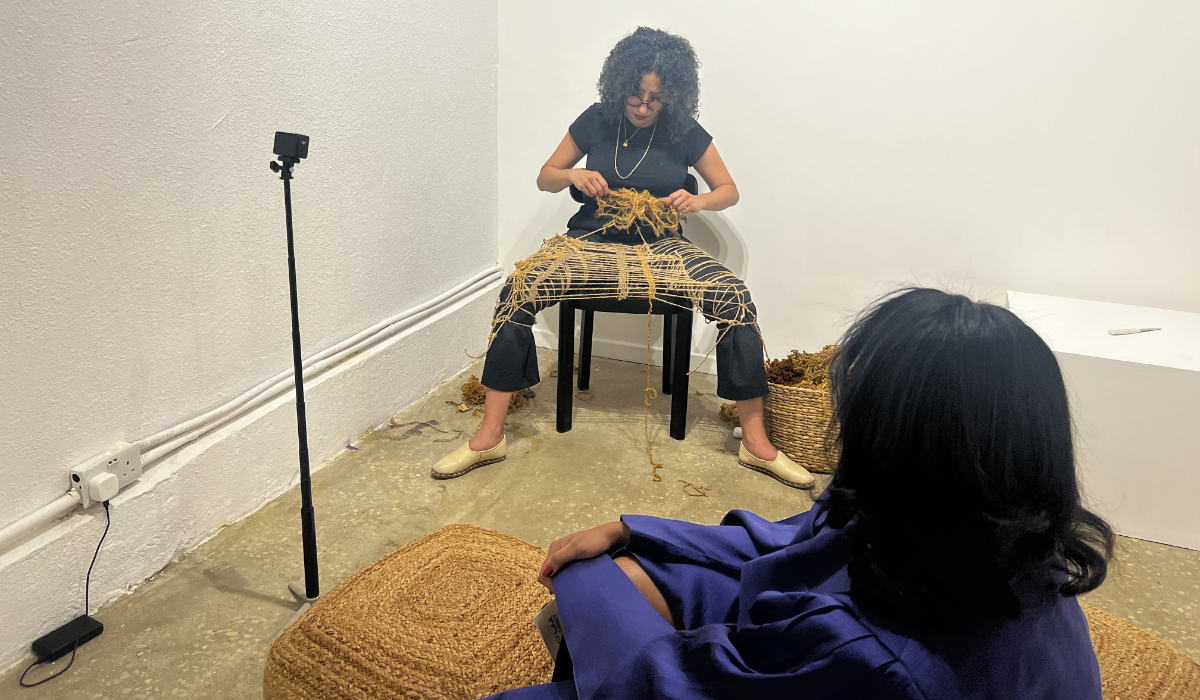
Italian visual artist Ivo Cotani told Arab News: “The residency (has) pushed me forward a lot. I’ve seen (it) not just in my productions, but (by) being myself in my art. I feel more mature and comfortable with what I’m doing.”
His artwork “I Am Nature” is a combination of various mediums and is inspired by local flora and fauna. His studio showcases small ceramic sculptures of oryxes, camels, eagles and other animals, abstract floral paintings, and animal-like flower masks made with the help of two artisans.
HIGHLIGHT
The Intermix Residency program is fully funded and initiated by Saudi Arabia’s Visual Arts Commission in collaboration with the Fashion Commission, and hosted in JAX District within Diriyah.
He added: “Whenever I work, I’m always relating to the land in some way. I have been looking at nature and the desert, and I also visited AlUla and saw the tombs and eagles there. From there I started creating and studying the animals of the desert. I was thinking of embodying nature in some way, and then I thought of masks.”
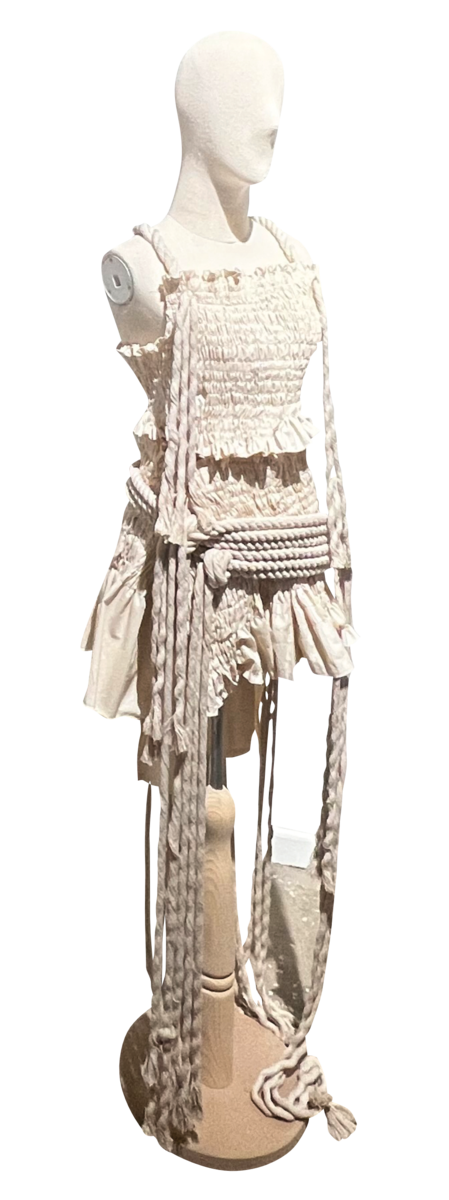
The open studio’s artworks delve into the intricacies of human experience, exploring how individuals embody memories, emotions, and interpretive codes that shape relationships between oneself, daily life, and the natural world, producing an archive of experiments, research, and possibilities.
Saudi visual artist Maram Alsuliman’s “Fragments of the Missing” reflects her background and interest in tradition. She investigates the why, how, and impact of forgotten, discontinued traditions, which are only temporarily preserved through oral transmission.
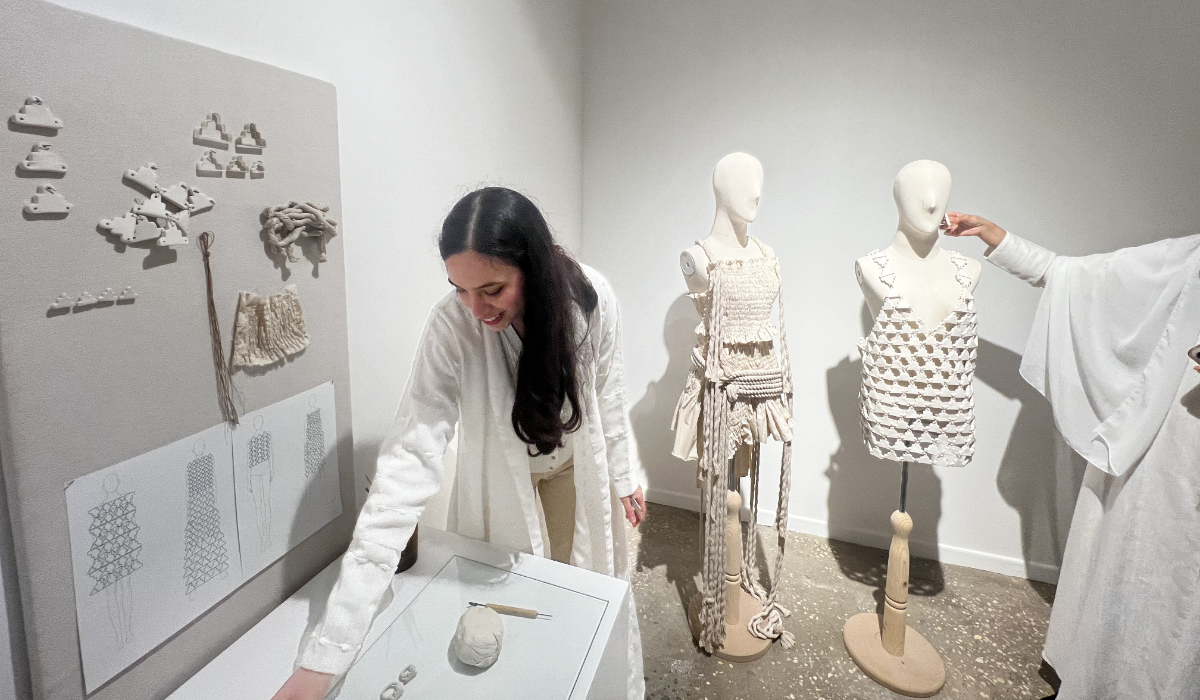
She told Arab News: “My family’s from Najran but I was born and raised in Jeddah, so I’ve always had this curiosity to know more about Najran. While it’s even difficult for me to learn about it, though my parents are from there, how will others learn? I’ve felt like it’s my responsibility to document and tell people about it through my art.”
Mirroring the residency’s sustainability theme, she uses objects that are discarded, like date seeds and broken coffee cups, to create abstract shapes that are then screen printed onto bags. The natural black dye is made from broken-down date seeds.
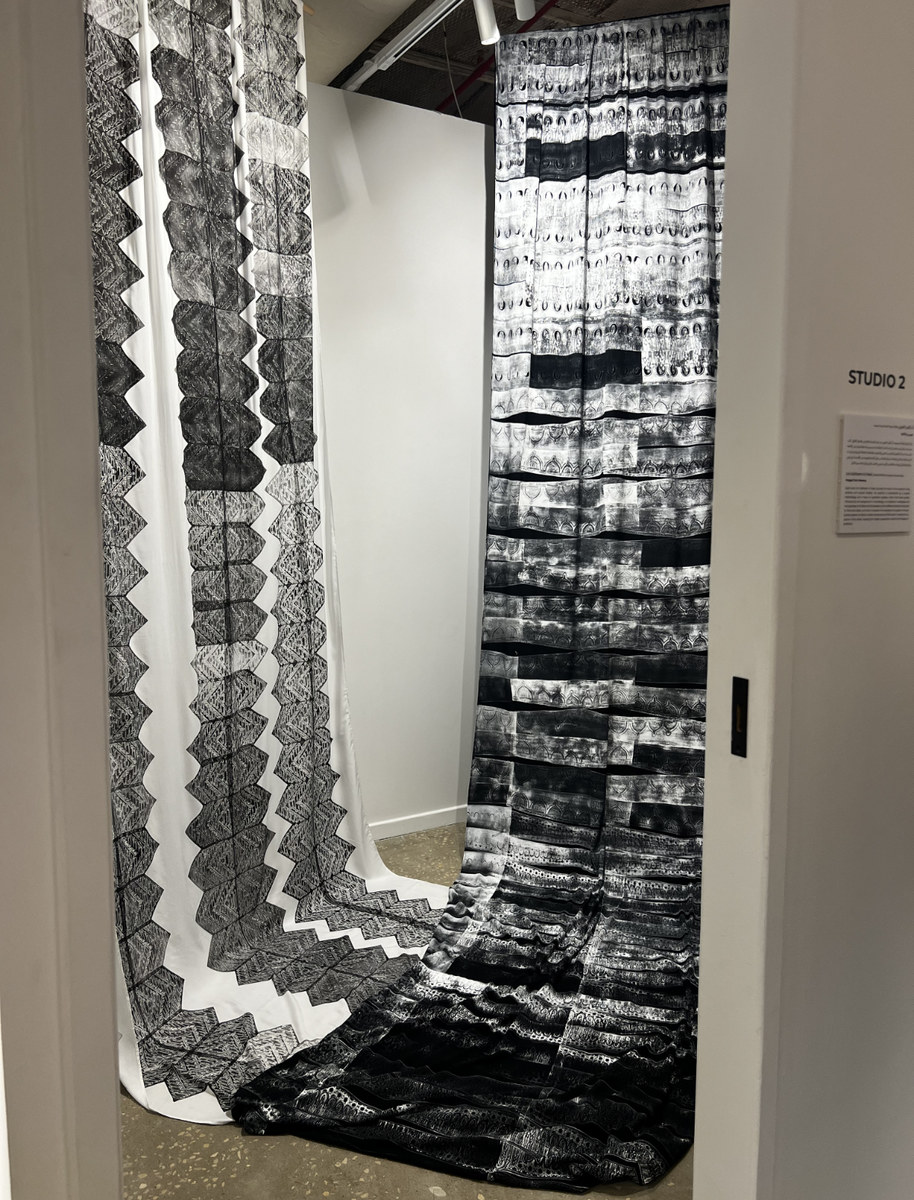
Alsuliman added: “My dad used to bring dates back from Najran in these plastic bags. For him he was carrying food, but I wanted to use them to carry my traditions.”
Alla Alsahli, a Syrian Palestinian designer born and raised in the US, incorporates material manipulation and repetition to tell stories that are rooted in culture and space.
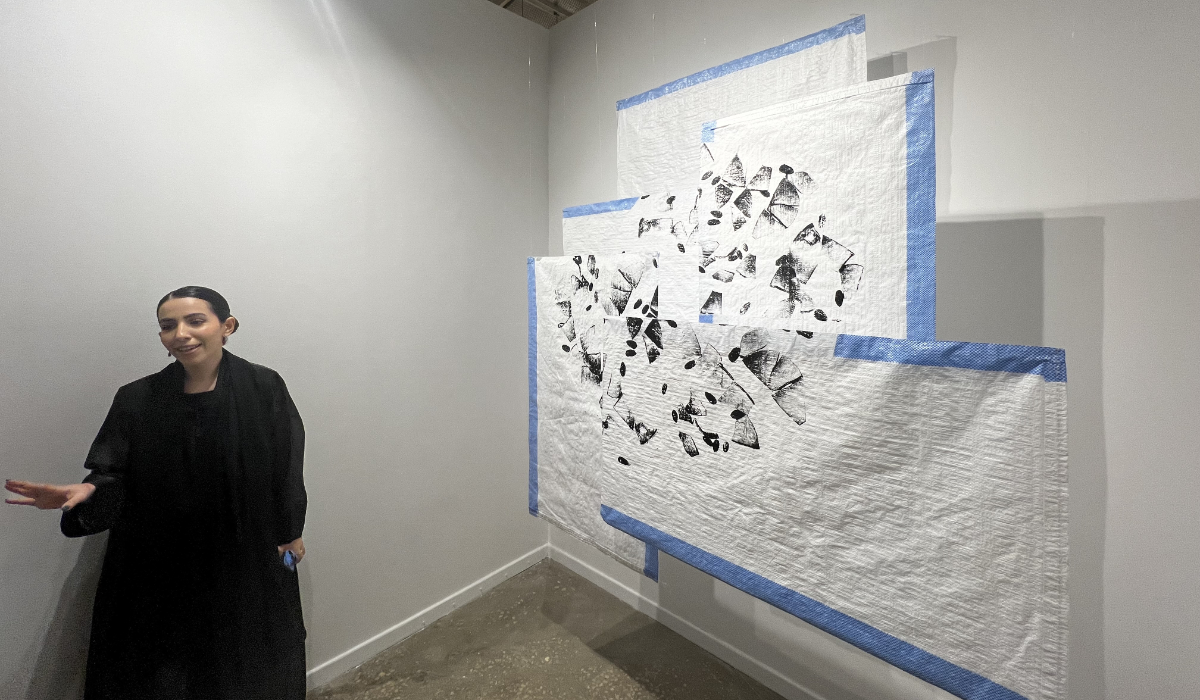
Her Intermix project explores the idea of preservation through architecture in Riyadh and beyond. Inspired by the triangular geometrical patterns of Najdi traditional mud buildings, Alsahli creates fashion pieces out of clay, rope and fabric.
Her first ensemble joins each handmade ceramic piece with thread to hold it together. The other is constructed using the throw-away muslin fabric, which is used as a prototype by most designers, linked together by rope. The process of connecting each element to the other symbolizes a hope of preservation.
As architecture goes through phases, construction followed by deconstruction, so the art mirrors the process.
She told Arab News: “The reconstruction phase — which is when people are trying to revive and bring that space back to life — we see that a lot here in Riyadh with Diriyah and Al-Bujairi where a lot of people want to hold on to that culture and style because it's so significant to Najd. I wanted to translate that into fashion to showcase the idea of reconstruction.
“When I started the project, I was thinking about Saudi Arabia a lot, but I felt bad for not relating it to myself and my identity. When I started thinking about myself more, I thought about Syria and Palestine and that’s where the idea of ruins and preservation came from.”
The program's mission is to foster a shared visual language that celebrates the expressive potential of both visual arts and fashion design.
Kuwaiti artist Maha Alasaker focuses on the relationship between nature and culture, with a particular emphasis on the natural colors that can be extracted from the land. This led her to investigate herbal medicines and their historic use in pain management for women.
She presents a live ongoing performance using her own body as a loom for weaving as she contemplates the complex relationship between body and land.
While Egyptian fashion designer Somaia Abolezz’s abstract wearable installations demonstrate elements of the caravan journey from Egypt to Makkah, Saudi artist Um Kalthoom Al-Alawi’s “Images of Memory” investigates what lies hidden and what is revealed through printed patterns on fabric.
The Intermix Residency program is fully funded and initiated by Saudi Arabia’s Visual Arts Commission in collaboration with the Fashion Commission, and hosted in JAX District within Diriyah.
It aims to provide emerging and mid-career Saudi nationals, residents, and international visual artists, fashion designers, and curators with a platform to innovate, experiment, and collaborate in a supportive creative environment.
Guggenheim Museum acquires works by Emirati artist Mohamed Ahmed Ibrahim

DUBAI: New York’s Guggenheim Museum has acquired five works by Emirati artist Mohamed Ahmed Ibrahim, according to a statement by his representing gallery, Lawrie Shabibi, in Dubai.
Ibrahim, a prominent figure in UAE contemporary art, is known for his abstract and organic sculptures, many inspired by a deep connection to the local environment, particularly that of his hometown of Khor Fakkan, on the Gulf of Oman.
In 2022, Ibrahim presented his work at the National Pavilion UAE exhibition at the Venice Biennale. The exhibition celebrated his 40-year career, underscoring his status as a leading experimental artist from the UAE.
Queen Rania celebrates Crown Prince Hussein’s birthday with a portrait featuring Princess Rajwa

DUBAI: Jordan’s Queen Rania celebrated her son Crown Prince Hussein bin Abdullah’s birthday on Instagram with a newly released portrait of him and his wife, Princess Rajwa.
In the photo, the pregnant Princess Rajwa, who is Saudi, is seen wearing a light, creamy yellow midi dress from the Spanish brand Rabanne. The dress features short sleeves, a round neckline and a gathered detail along one side, adorned with a row of buttons.
The crown prince was wearing a navy blue shirt and matching trousers.
“Happy birthday my dearest Hussein. Can’t wait to see you and Rajwa as parents,” the queen captioned the post.
The royal couple, who announced their pregnancy in April, are expecting their first child this summer.






